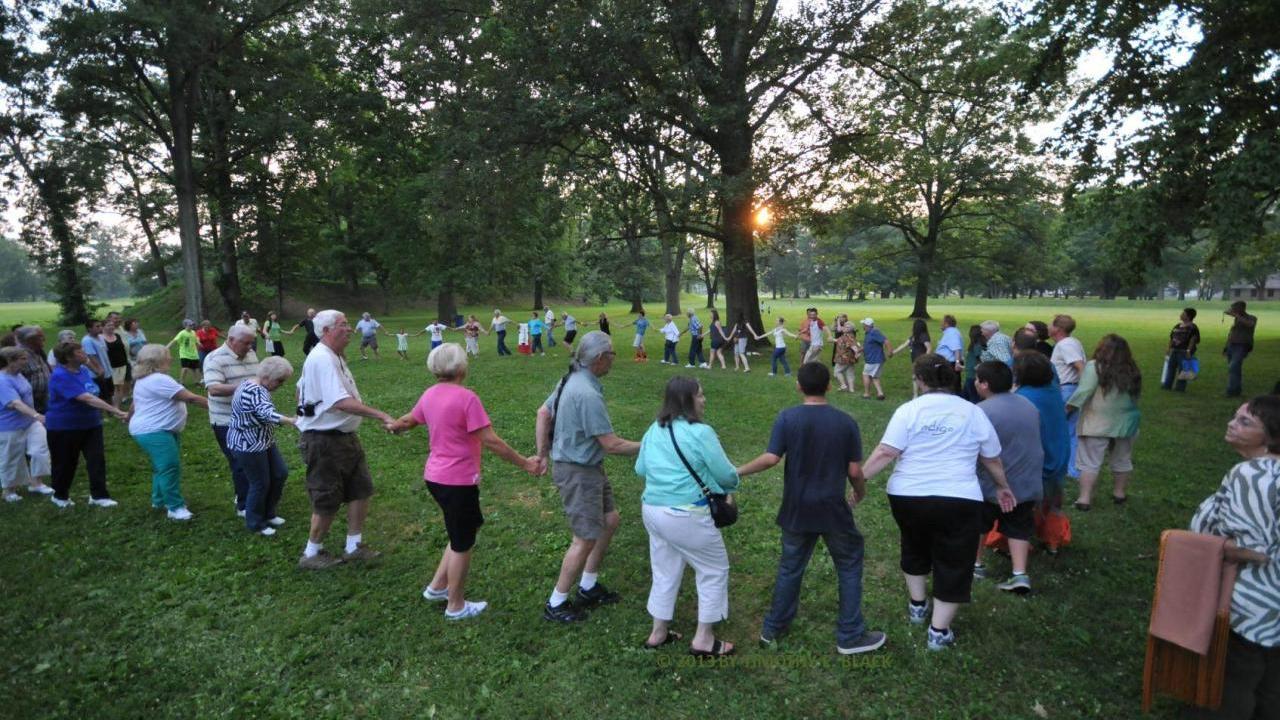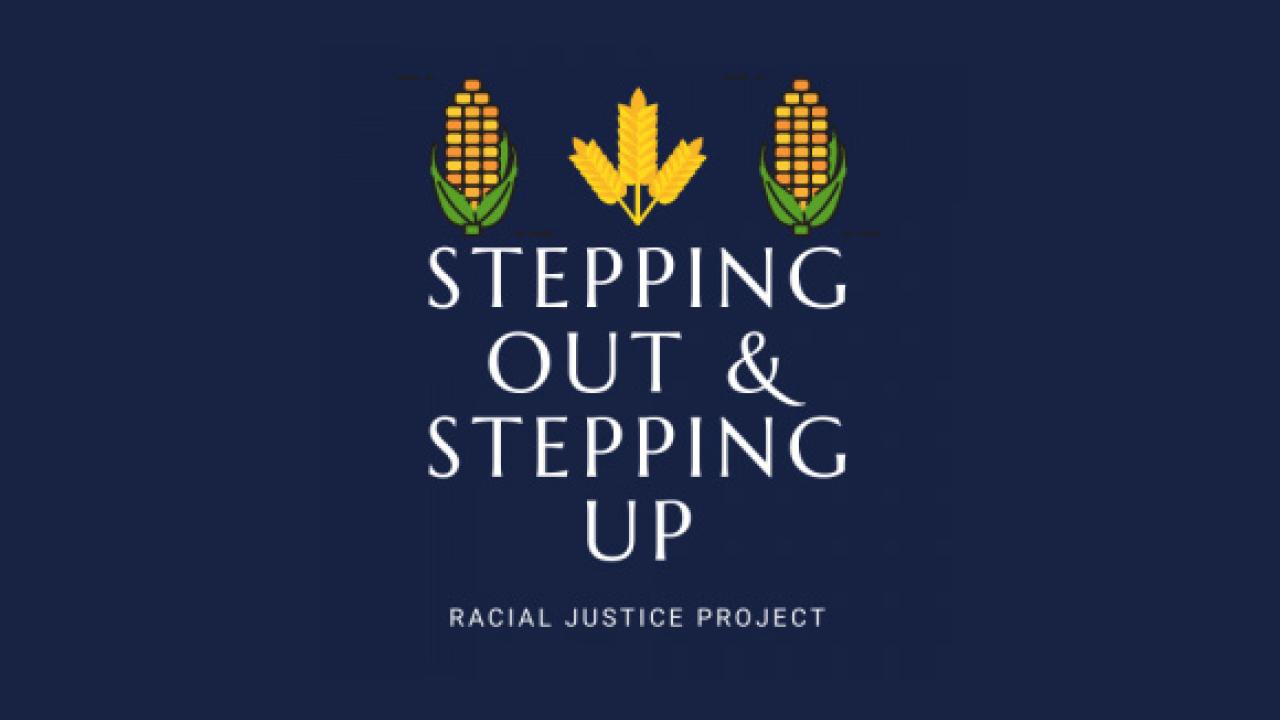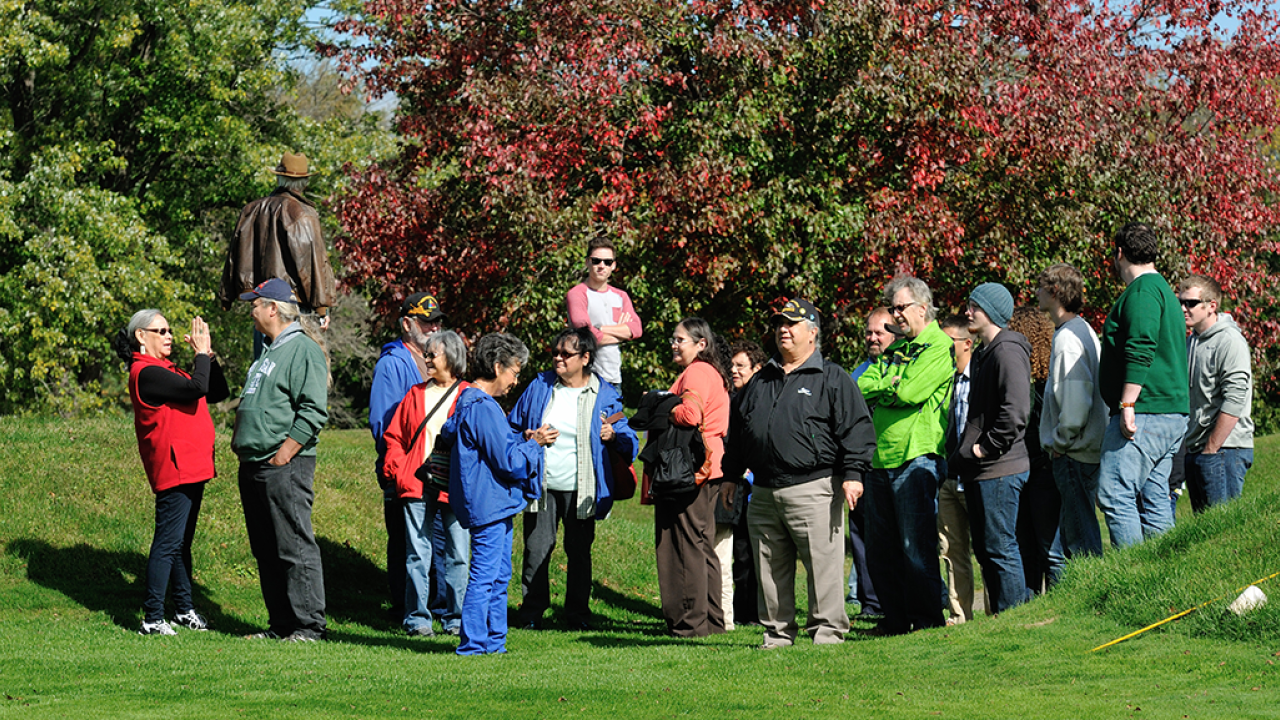The preserved portions of the Newark Earthworks include the Great Circle, the Octagon, and sections of the Wright Square.
The Great Circle, Octagon, and the Wright Square's grounds are free and open year round from dawn to dusk.
The Great Circle's museum is typically open from 10 a.m. to 4 p.m. on Thursday, Friday, and Saturdays, visit the Ohio History Connection [external link] for holiday hours and more information.
Enjoy the earthworks but please do not climb on the walls. We would like to keep these walls standing tall for 2,000 years after you visit them. Foot traffic will cause damage over time.
Dogs are welcome on all the sites. Please keep your furry companions leashed and take advantage of our waste bags and remove messes that they may create on the grounds.
The use of drones is prohibited at all Ohio History Connection sites. To inquire about commercial filming permits, contact Neil Thompson, manager of media and public relations, at nthompson@ohiohistory.org .
The Great Circle
The location of the Newark Earthworks Museum. The site consists of a circular earthwork formed by a tall continuous earthen wall that encompasses 30 acres of land. The wall is lined by a deep ditch on the inside of the earthwork. The Museum is located at the top of a slight rise with a paved pathway leading to it. There is no paved pathway into the interior of the Great Circle.
The Museum located at the Great Circle includes a bookstore and interpretive center.
The restrooms near the shelter houses at the Great Circle are open 8 a.m. to 5 p.m.
Address: 455 Hebron Road, Heath, OH 43056
The Wright Square
A small portion of a square earthwork enclosure positioned northeast of the Great Circle. This site provides a perspective of how development has impacted earthworks not only in Newark but all over the state of Ohio.
Address: James Street, Newark, OH 43055
The Octagon
Two combined earthwork enclosures positioned above the floodplain of Raccoon Creek. This earthwork includes a 20-acre circle and a 50-acre octagon, connected by a small passageway.
Address: 125 N 33rd Street, Newark, OH 43055
The site is fully open to the public, dawn to dusk.
Guided Tours
A FREE guided tour of the Great Circle is offered the first Friday of the month, April - December, at 12:30 p.m. Please meet at the map in front of the museum.
Regular guided tours of the Great Circle are offered from March through November at 10:30 am and 2:00 pm on Thursdays, Fridays, and Saturdays.
Tours will include a 45 min walk through the Great Circle and then a 20 min talk at the Octagon Earthwork. The price for a guided tour will be $10 per person aged 12 and up and $5 dollars for children aged 5 to 12, children under 5 years of age are free. Tour admission is free for all Ohio History Connection Members.
There is no registration or sign-up required for regularly scheduled tours.
Visitors that are planning on attending the tours are asked to stop at the front desk of the Great Circle Museum to purchase tickets prior to tour departure. All tours will begin on the front patio of the museum.
Tours are led rain or shine. Please check the weather and dress accordingly. There are no paved walkways into the earthwork.
To schedule a group tour outside of regularly scheduled hours please contact the Ohio History Connection's site manager via email (shinkelman@ohiohistory.org) or call the office at 740-344-0498.
Information for self-guided tours can be found on the Ancient Ohio Trail's Newark Earthworks page, which you can also print out.
Field Trips
To schedule a field trip, reach out to the Ohio History Connection's site manager at least 4 weeks prior to the date you would like to visit. We ask that you try to plan at least 3 hours for field trips.
The experience will include a guided tour and three activities in which students will engage with earthwork planning and construction and the history and culture of the Middle Woodland Period in Ohio. All activities are tailored to align with 4th grade Ohio Social Studies standards. However, tours and activities can be adapted to accommodate most grade levels between elementary and high school.
The admission fee (including guided activities) will be $5 per student in attendance. Admission is free for teachers and chaperones. Picnic facilities available for sack lunches and snacks.








